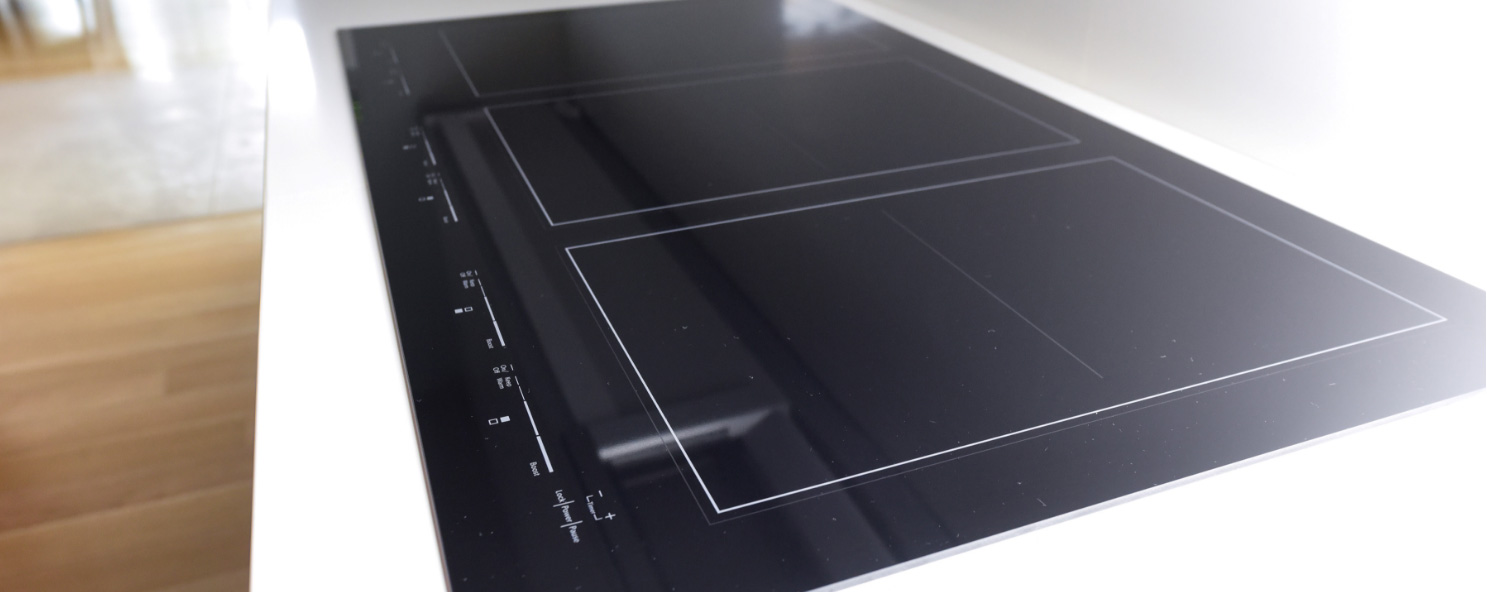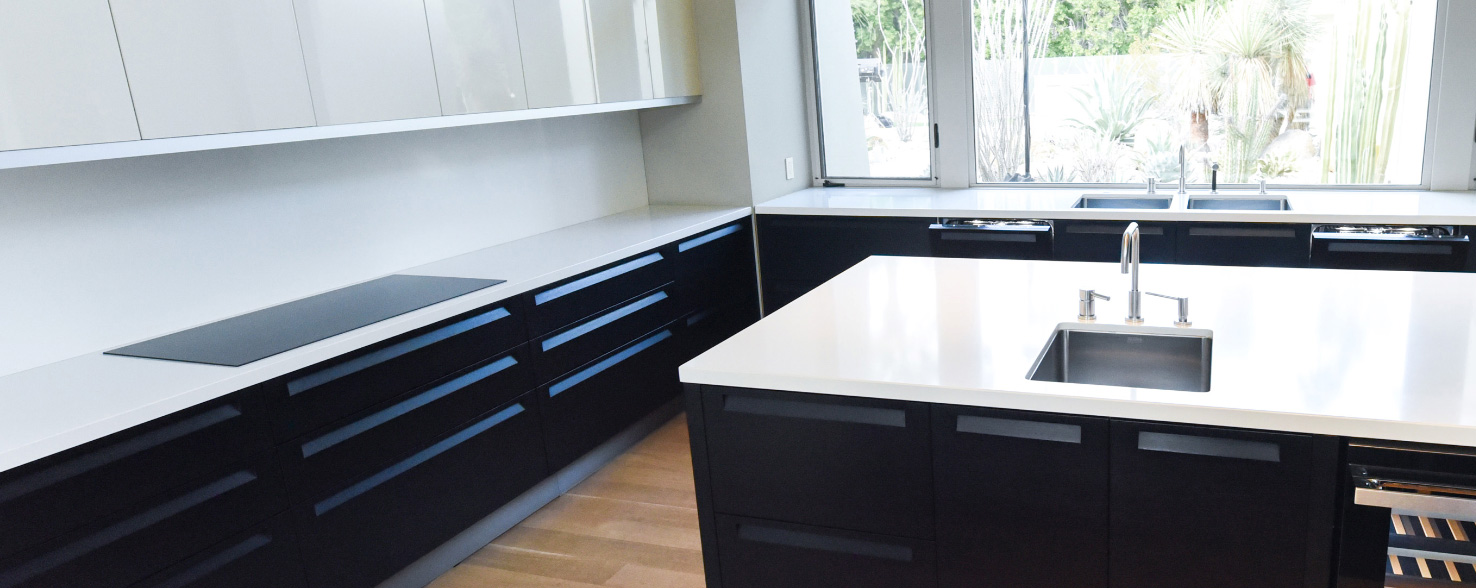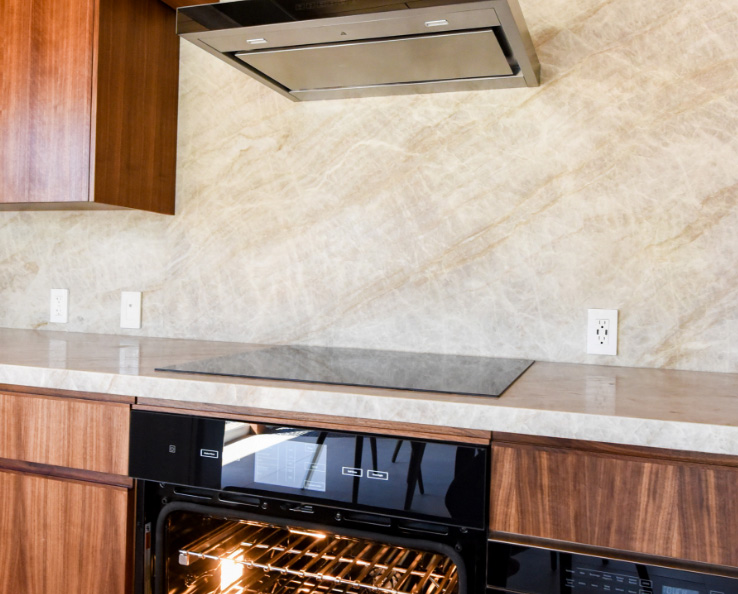
Table of Contents
Are you thinking about getting a new cooktop? Discover why a ceramic cooktop may be the right option for your kitchen.


A Ceramic Cooktop: How Does It Work?
Ceramic cooktops have a smooth and flat surface that is made from ceramic glass. Appliance stores tend to group all ceramic cooktops together, however, there are a variety of options:

Radiant uses metal coils under a ceramic glass surface to generate heat.

Induction cooktops work via a copper wire coil under the cooktop that generates electromagnetic energy. This magnetic energy then interacts with compatible cookware to generate heat.
The Difference Between Induction and Radiant Cooktops
In comparison to other electric range/cooking options, induction cooktops tend to produce greater cooking efficiency. This is achieved by heating the cookware directly, as opposed to simply warming the surface, as is the case with their electric range/cooking counterparts.
As a result, the cookware becomes a heat source and the cooktop will not heat until a pan is placed on it. Induction cooktops are becoming increasingly popular because they are highly efficient, easy to clean, and can reach a boil or drop in temperature quickly. This can shorten cooking times, especially in pots, as the water comes to a boil sooner.
Pros and Cons of Ceramic Cooktops
Consider these pros and cons regarding ceramic cooktops to find out if they are right for your kitchen.
What Are the Benefits of Ceramic Cooktops?


- Clean-up is easy with ceramic cooktops, making them a great alternative to gas stovetops and ranges. The grates and burner caps on gas ranges/cooktops need to be removed or you have to clean around them whereas ceramic cooktops are completely smooth with no grates to collect oil.
- Radiant cooktops, one type of which is ceramic, are often equipped with heat indicators to show when the stovetop is on, and induction cooktops do not heat until a pan is placed on them.
- They make a beautiful addition to any kitchen. There is a growing trend towards seamlessly integrated appliances, and a ceramic cooktop blends in beautifully with its surroundings.

Induction cooktops also offer these benefits:
- Cooking results can improve due to better temperature control.
- With an induction range, 85% of the energy is delivered directly to the cookware, according to the Department of Energy. This improved efficiency tends to result in faster cooking times.
- With induction cooking, less hot air is released into the kitchen.
- These cooktops instantly react to a temperature change.
To explore these cooktop options and more, click here.
What Are the Downsides of Ceramic Cooktops?
Ceramic cooktops have very few disadvantages but there are a few to consider:
- Scratched glass might be concerning to some owners. Surfaces can be scraped or cracked by pans with a rough bottom or by dropped items.
- When choosing an induction range or cooktop, you should note that it is not compatible with all cookware. Ferro-magnetic iron cookware is required. The JennAir brand offers bonus cookware when you purchase an induction cooking appliance*.
- Heat delivery from radiant cooktops is usually less responsive or slower than that from gas or induction cooktops. Induction, on the other hand, offers high heat output, high control of temperatures, and very fast heating time. This makes it a great choice for cooks looking for the professional results that you often get with a gas range.
- Ceramic cooktops generally cost more than traditional coil cooktops.


14 Stovetop Practices You Should Adopt
Here are some tips to help preserve your smooth-top electric range or cooktop over time.
- Do not place jars or cans on or near the stovetop. The cooktop could crack if you drop a heavy or hard object on it.
- If you spill sugary food, wipe it up as soon as possible. First, let the cooktop slightly cool down. While the surface is still warm, use a scraper to remove the spill while wearing oven mitts. Sugary spills can cause permanent marks if the top is left to cool down.
- Avoid sliding cookware or bakeware across your cooktop to help prevent scratches. Using cookware or bakeware with copper or aluminum bottoms or rough finishes can also leave scratches or marks on the cooktop.
- Never cook popcorn in aluminum containers on the stovetop. They could leave aluminum marks that cannot be completely removed.
- Don't leave a hot lid on your cooktop as it may damage it. It is possible to trap air between the lid and the cooktop as it cools, and the ceramic glass may break when the lid is removed.
- Do not touch any part of the cooktop with anything that might melt, such as plastic or aluminum foil.
- Avoid using the cooktop as a cutting board to prevent damaging it.
- The best way to conduct heat is with flat-bottomed cookware. Uneven heating and poor cooking results may occur in cookware with rounded, bent, marred, or dented bottoms. Measure the flatness of a cookware's bottom by using a ruler's straight edge. It should not be possible to see any space or light between your ruler and the cookware while it is rotating.
- Ensure that the bottoms of pots and pans are clean and dry before using them. When water and residue are heated, they can leave deposits.
- Do not place stoneware and other cookware with rough or unfinished bases, such as ceramics, on the stovetop.
- Use soft sponges and cloths rather than metal pads when cleaning. Use a cleaning solution made specifically for ceramic or glass cooktops.
- Never stand directly on top of (to reach the ceiling height) or place anything extremely heavy on a smooth-top cooktop. At first glance, it may seem that the glass can support the weight, but when the glass or ceramic is heated, the glass or ceramic may shatter or break.
- On a smooth-top cooktop, never place hot glass bakeware to cool (from the oven). Glass bakeware should be placed on a dry towel on a counter to cool.
- Do not place stirring utensils on a warm cooktop. Cooktops can be marked or burned when utensils that have food on them are placed on a warm cooktop.
Ready to Shop for a Ceramic Cooktop?
Now that you understand the benefits of ceramic cooktops, you may be more interested in achieving the efficiency that they can offer while enjoying their ability to maximize your cooking experience.
See all of JennAir Brand's Models
* Terms and conditions apply and the offer is subject to change at any time.
Compare 0/3
